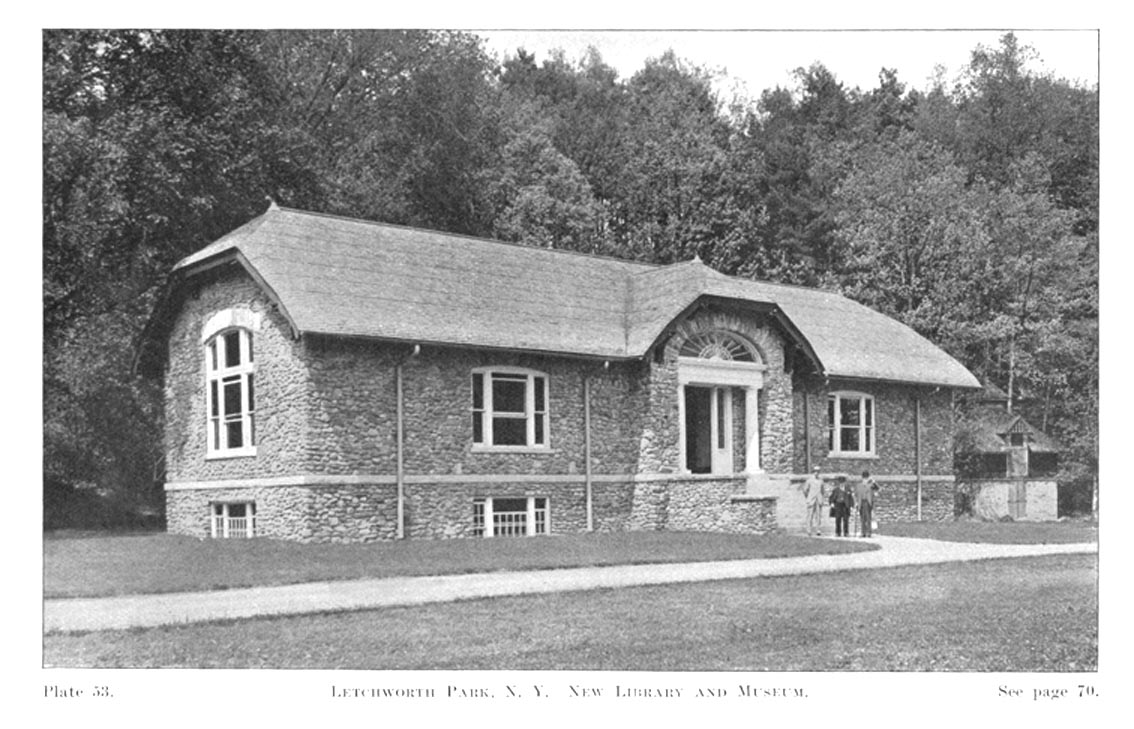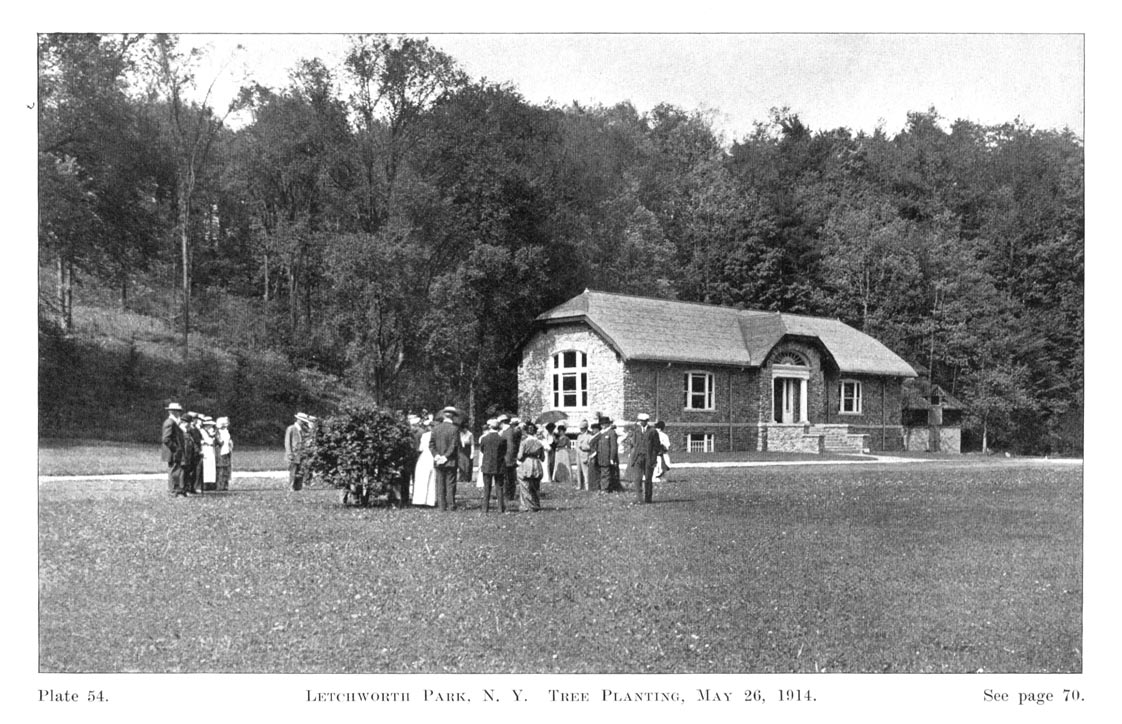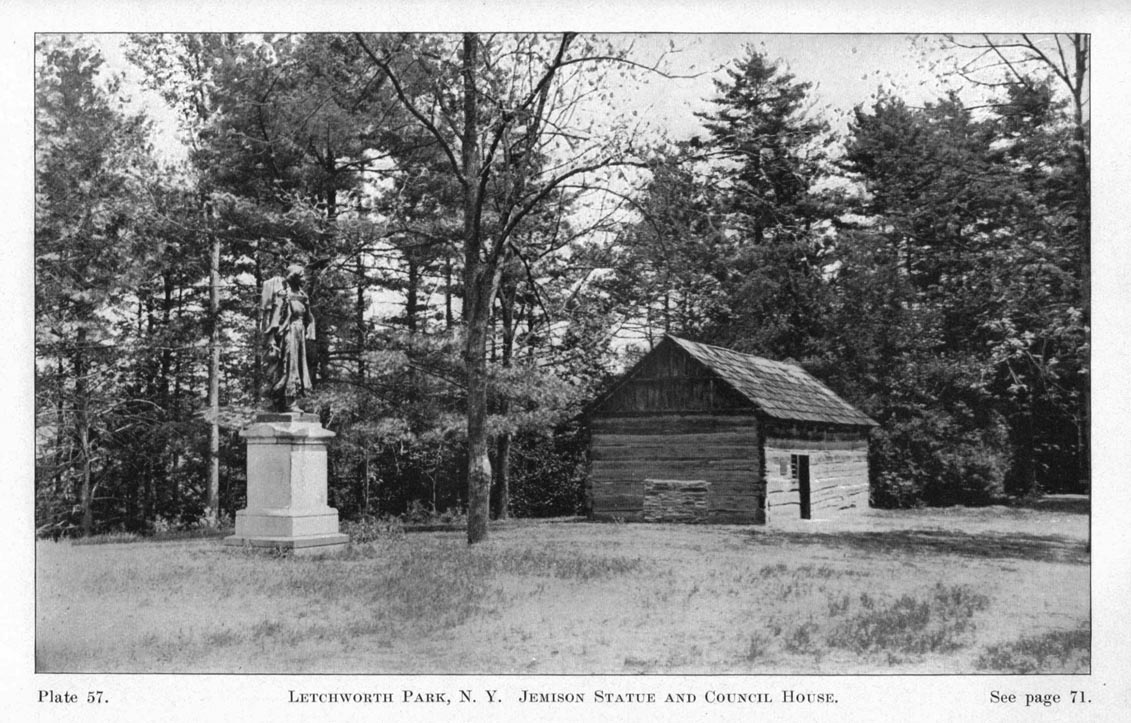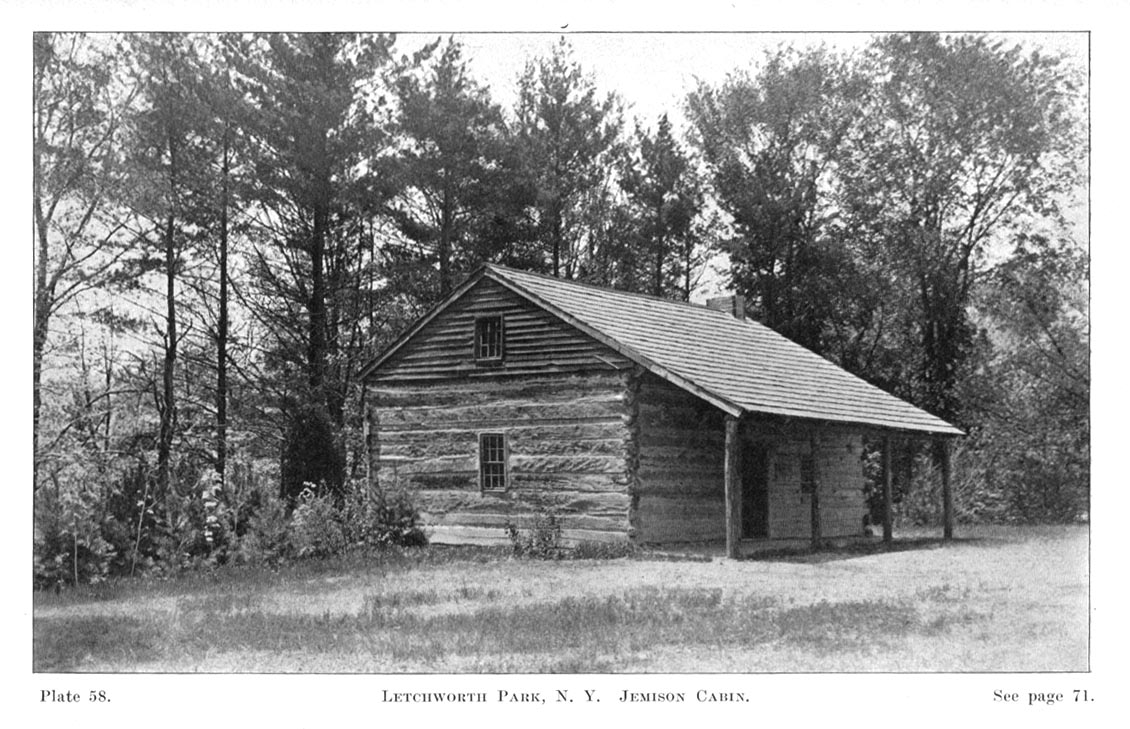![]()
Excerpts from the ASHPS Annual Report
1913-14
The annual reports of the American Scenic and Historic Preservation Society are extremely useful to exploring the early years of the new state park. The images below are taken from the 19th Annual Report of the society that was published in 1914. These black and white images, along with their labels, are presented as they appear in the report. We have added a discussion after each image, along with links to other related pages. Quotes taken directly from the report are in italics.
|
 |
The Letchworth Park Museum was completed in the Spring of 1913. The report states that the new building "which cost $10,000, was built with funds from the Letchworth Legacy to the Society, and is the execution of a wish expressed by the donor of the Park....(the museum) is built of random rubble, hollow tile and concrete. The work of the architect, Mr. E.A. Phillipps, and the contractors, Albert Lindquist & Company of Jamestown, N. Y., have been highly satisfactory in connetion with this building." (See building under construction).
|
 |
"In April the contents of the old Museum on the Council House Grounds were moved down into the new building...In June, the books from Mr. Letchworth's library were removed from their cases on the third floor of the wooden Glen Iris Mansion to their more secure place in the new building...." The plate above shows one of the two Museum Rooms. This room currently houses the display on William Pryor Letchworth and is found to the right when you enter the present day Museum. The original cases have been incorporated into the new display called "Echoes of the Glen." (See our glimpse of the William Pryor Letchworth Museum.)
|
 |
A small group gathers on the lawn near the new Museum to plant a tree on the anniversary of Mr. Letchworth's birthday. None of the individuals are identified, but it is probable that one of the group is Caroline Bishop. She played a special role in the new park, as described in the report: "With the completion of the new Library and Museum building...Miss Caroline Bishop, who had been Mr. Letchworth's faithful Secretary for nearly a quarter of a century and who, since his death, had been Superintendent of the Park, was given the more congenial position of Librarian. With a view to discharging the duties of this position and also acting as curator of the Museum, Miss Bishop has during the past year visited some of the leading libraries and museums in the east and carefully studied their methods. On October 1, 1913, Miss Bishop was suceeded as Superintendent by Mr. James O. Howard. who also continues in the position of Nurseryman." The report also talks about the site of the new Museum, built on the site of Mr. Letchworth's garden and barns. "The demolition of the old wagon and horse sheds in the rear of the building has greatly improved its environment. The surrounding grounds have been sown with seed received from Conrad Apple of Darmstadt, Germany....A water supply has been installed in the new building, book cases built, and new office and library furniture installed. At present the office and library rooms are kept locked but the museum and the remained of the building are open to the public during the week." The tree they are planting no longer is standing - one of the Glen Iris parking lots are in that vicinity today. |
 |
A sure sign of the times was the construction of the comfort station that still stands near the Middle Falls. "The public comfort station on the left bank of the river, near the Middle Falls, was finished in April, 1913, except the plumbing, which was subsequently installed. The introduction of running water in this building completes its modern equipment...." The new public bathroom impressed the early visitors to the new Park - some even had their picture taken at the new building! |
 |
There were also many changes on the Council Grounds. According to the report "The Council House Grounds, so-called from the fact that on them stands the ancient Seneca Council House built of logs, have been greatly improved during the past year. We mentioned in our last Annual Report the demolition of the inharmonious chalet like cottage and the moving of the log cabin of Mary Jemison's daughter to a more eligible position on the Grounds. In April, 1913 the old corrugated iron Museum was demolished, its contents having been moved to the new building on the Glen Iris grounds. This further opened up this interesting part of the Park and removed the last incongruous structure in the vicinty of the Council House." "During December, 1913, the Council House was moved a few feet farther from the Jemison monument for its better preservation. Where it formerly stood the ground sagged and the lower timbers had showed evidence of disintegration. Its present location is on higher ground and a better foundation has been provided, allowing the lowest logs to clear the ground. The new position of the building shows it to increased advantage and gives a better balance to the arrangement of the Council House Grounds." |
 |
The report continues: "Iron wire-mesh doors have been placed in the doorways of the Council House and Jemison cabin so that the wood doors may be left open and views on the interior obtained without entering. The grounds have been graded and seeded, and about 600 different trees have been set out. These trees range from one foot to twelve feet in height. White Pine, taken from the old nursery that was established by Mr. Letchworth, was first set out. With this were planted White Oak, Paper Birch, Hemlock, Sugar Maple, Ash, and such shrubs as Witch-hazel. The embankment along the roadway in front of the Jemison cabin has been planted with a variety of forest trees and shrubs, and the open place where the cabin stood before it was moved has been filled with Hemlock and White Pine...." "These changes have greatly improved the Council House Grounds, which now present a harmonious aspect with only the grave and monument of Mary Jemison...the old log Council House, the log cabin of Mary Jemison's daughter and the section of the big Council Tree under a rustic arbor. The aim in treating this portion of the Park has been to make a place which should be sacred to the memory of Mary Jemison and the aboriginal owners of the land." The report also states that tablets were being prepared for the Council House and the Jemison cabin. The plaques still hang on the buildings. During Letchworth Park's Centennial the Jemison Cabin and Council House were restored to their original positions. See our glimpse for details of the restoration. Watch for more information from the Annual Report of the American Scenic and Historic Preservation Society! |